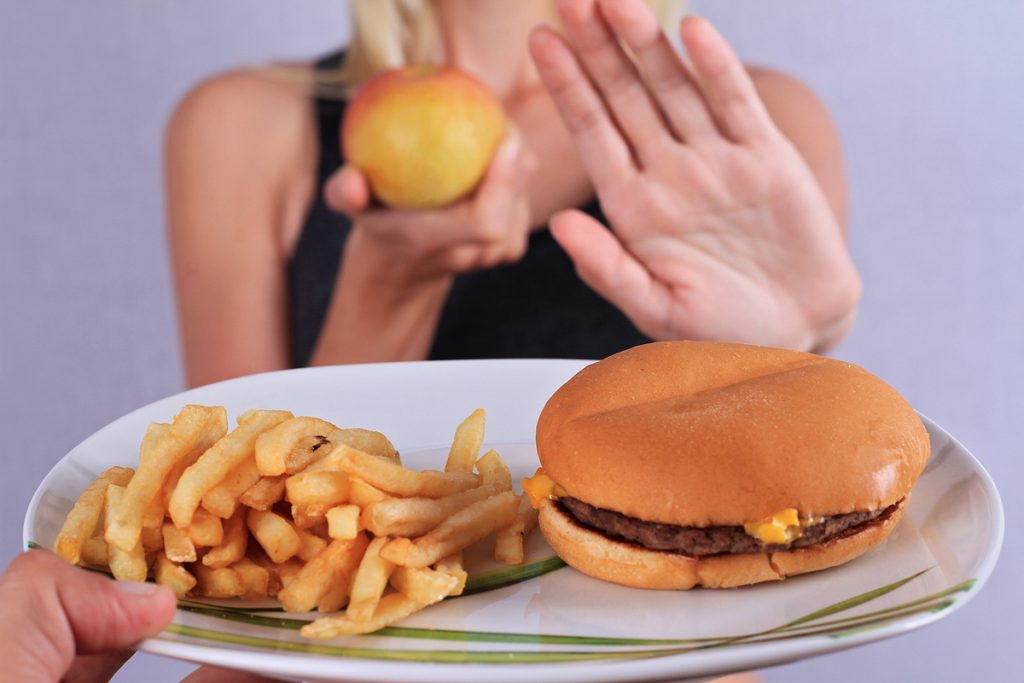There is never a pure biotype, there is always a high percentage of biotypes that are more overweight , even after dieting.
Raúl Carrasco, our IFBB Pro athlete and MAsmusculo partner tells us that there are those who are overweight since childhood, or have a slow metabolism that is prone to make them overweight , which usually happens when the grandmother has fed more than usual.
What happens ?; is that there comes a time that you become aware of diets and others and you lose weight, you even reach the ideal weight, which by the way looks great, no one would say that you have been overweight .
Overweight : what are the realities?
What happens to almost everyone is that fear is present here, a great fear of going back to overweight again.
What is clear is that you have to maintain that weight with a normal calorie diet, because you cannot be on a hypocaloric diet your whole life. To begin with, a restrictive diet makes your body work without the calories it needs.
- Normally, associations, including the WHO, argue that a subject weighing 70 kg. You need 2,000 calories to survive, because you burn 2,000 calories.
- If you estimate that you need 2500, then you need 2500, but if you as an athlete need 3000, you cannot be with 1500 calories all your life.
Therefore, here it is important: if you have lost all that weight, it is clear that you must have a high metabolic flexibility.

Overweight and metabolic flexibility
Metabolic flexibility is an intelligent mechanism that has allowed us to efficiently accumulate or expend energy in response to seasonal and environmental changes year after year (1).
This process is controlled by nutrients, hormones, gene transcription factors, and cell signaling systems that act as switches.
A metabolic change essentially changes the way your energy is divided, stored, and used in the body; Glucose and fats (fatty acids and ketones) can be used for cellular energy and can compete with each other.
Metabolic flexibility means that the macronutrients: proteins, carbohydrates and fat are going to be distributed throughout the body, to the organs, to the muscles, in general for whatever it takes, very efficiently and, this is a An essential factor to avoid overweight .
- The minerals will flow,
- The energy will always be in constant balance,
- The energy systems both AMPK, MTOR, everything will flow well.
You will have a very good metabolic flexibility, depending on the glycemic index of the carbohydrates you eat; it does not matter, your body will adapt and absorb it. In contrast, metabolic (in) flexibility is the loss of the ability of cells and tissues to adapt fuel utilization to fuel availability.
Therefore, after a long diet, your sensitivity is high, your metabolic flexibility is high and that is what you should take advantage of.
Gain weight again, how to avoid it?
How should you take advantage of this point where you have already reduced weight and are adapted? Well, in many ways, but in this case, maintaining insulin sensitivity, that is, maintaining metabolic flexibility.
To seize the moment and not return to overweight again, always take totally natural supplements.
In this case, you can take supplements such as Alpha Lipoic Acid for life (Raúl Carrasco recommends the NA-R-ALA form), in its less basic form, less simple but it is the best, because 100 mg of this The compound has the same potency of 600 mg of ALA, since in the R form, if it is in the NA form, it binds sodium and is better absorbed.
- Plants like berberine or fenugreek help you have that sensitivity to insulin.
- Green tea is an activator of AMPK.
- Garcinia is also effective for its HCA which blocks carbohydrates.
- The simple caffeine, cinnamon, all this consuming within the diet, helps you maintain high insulin sensitivity.
This supplementation helps you to convert that extra amount of carbohydrates (because it is very easy to exceed carbohydrates), become fat.
On the other hand, maintain an Omega 3 / Omega 6 balance; that is, if you don’t eat oily fish at least 3 times a week, supplement yourself with an Omega 3 supplement.
This is done more when you have a high amount of triglycerides in your blood, but as maintenance, about 1000 mg. EPA and DHA, which are usually two 600 mg Omega 3 pearls. of purity, or 3 pearls of Omega 3 of 1g of 300 mg of purity in the dinner and the breakfast generally or, up to tripling if the metabolic flexibility is low.
Avoid being overweight dividing the carbs
Counting the amounts of carbohydrates you eat per day, not eating very high amounts is one way to do it well.
Here we can say that divide and conquer:
- If you need 300 g. carbohydrates, do not consume it in 3 meals of 100 mg.
- Each one will generate 3 high peaks of insulin that will create resistance and impair your metabolic flexibility.
- Try dividing those 300 g into 5 or 6 meals, so that in the end the total calories are the same, but the insulin spikes are milder.
The type of carbohydrate is vital
The type of carbohydrates is also relevant to avoid overweight ; Knowing which carbohydrates are the most amylopectin and most amylose is vital.
- In the tubers it is easy: the potato, the sweet potato, the cassava are rich in amylopectin …
- In rice dishes, things are more complicated; perhaps glutinous, round, jasmine rice are richer in amylopectin, and long-grain parboiled rice are less rich in amylopectin.
- Likewise, legumes are very poor in amylopectin and very rich in amylose.
It means that foods rich in amylopectin, bringing them closer from the post workout, are the ones that will create muscle glycogen the fastest, in addition to a large insulin spike, but at a time when you are more sensitive than at any other time of the day, which is after the training post.
It depends on the biotype, on the time, at 3 or 4 hours later, is when carbohydrates rich in amylopectin should predominate, and those less rich in amylopectin or more rich in amylose, such as steamed rice, pasta, legumes, vegetables, always at other times of the day in order to maintain greater metabolic flexibility.
When you eat those foods that are higher in amylose and lower in amylopectin, mix them at the same time with vegetables, because that amount of fiber will even slow down the entry of starch into the blood and decrease the glycemic index of the food.
All this will help you, likewise, to have greater metabolic flexibility and to maintain more sensitivity to insulin for a longer time and, thus, avoid overweight again.
How to eat to avoid becoming overweight
Imagine that you are overweight and it has taken you a whole year to lose 20 or 30 kg to reach your ideal weight and you do not want to return to overweight again.
Now, you want to maintain a healthy diet;
- In the morning you get up and put 50 g of whole oatmeal in it, but you boil it for 5 minutes in the microwave and make yourself gritz … Wrong!, because that high glycemic index generates a very high insulin peak …
- Mid-morning, to be more at the time of being at work or the office, you take a protein source of chicken or cold cuts of turkey, plus some rice cakes that are very comfortable (rice is healthy) but has a very high glycemic index (5 or 6 rice cakes that are about 20 or 30 g of carbohydrates goes through the roof).
So far, everything affects metabolic flexibility;
- Half a day you put a salad with brown rice; As it is whole grain you think you have a low glycemic index, but brown rice is not long grain, it is round grain, which has a lot of amylopectin, even when you boil the water thickens.
- Again an error!, because not being integral it will not create a greater insulin peak, therefore it is better rice that is not integral such as vaporized, which have extracted part of the amylopectin, or in the in case it is brown rice, long grain rice.
What you can do is that in the same meal mix carbohydrates, vegetables and meat, because this way you make it even more difficult for the stomach to separate, which in the end will occur but the entry of glucose into the blood it slows down a bit.
Metabolic flexibility and insulin
Metabolic flexibility is the body’s ability to adapt fuel oxidation to fuel availability.
The inability to modify fuel oxidation in response to changes in nutrient availability has been linked to intramyocellular lipid accumulation and insulin resistance according to a study published in the journal Endocrinology and Metabolism in 2008 (2) .
This study concludes that a “metabolic inflexibility” is mainly the consequence of an altered cellular glucose uptake.
An altered ability to upregulate muscle lipid oxidation in the face of an elevated lipid supply can lead to increased accumulation of muscle fat and insulin resistance.
Surprisingly, very few studies have investigated the response to high-fat diets; In this review, it was discussed:
- The role of the glucose removal rate,
- The storage of lipids in adipose tissue and,
- Mitochondrial function in metabolic flexibility.
On the basis of current evidence, it cannot be concluded that altered metabolic flexibility is fully responsible for all processes, however the link is not accidental, since there is an altered ability to metabolize Fat, muscle lipotoxicity and insulin resistance can be an important factor in returning to overweight .
How to maintain metabolic flexibility
The previous ones were important tips to maintain that metabolic flexibility and try, as far as possible, to make training more flexible so as not to return to overweight again.
That is, it does not mean that you train bodybuilding twice a day, but if you can do another exercise such as walking, cycling or a type of aerobic another time of the day, separate from weight training, either in the morning or in the afternoon or at night it can help you a lot.
You don’t need to train a lot to keep your metabolic flexibility high, because simply doing 20 or 30 minutes at a brisk pace already increases metabolic flexibility, which will help you maintain that sensitivity and be able to make that normocaloric diet more bearable.

The normocaloric diet: what is it?
Raúl Carrasco tells us about the normocaloric diet according to these percentages: 50% of carbohydrates, 20% of proteins and 30% of fats.
It depends on what sport or hypertrophy activity or, at what level you are, since that 20% of the proteins can be increased to 25 or 30%, but never more than 30% of the proteins. Obviously, if you are also in definition, that percentage of carbohydrates can go down from 50 to 40 and 30% and raise protein and fat a little more.
During these days at the beach, Raúl also enjoys his hybrid diet, which in addition to being nutritious is super delicious.
But when it comes to a definition diet, it should be clear to you that it is for a certain time to achieve that target.
